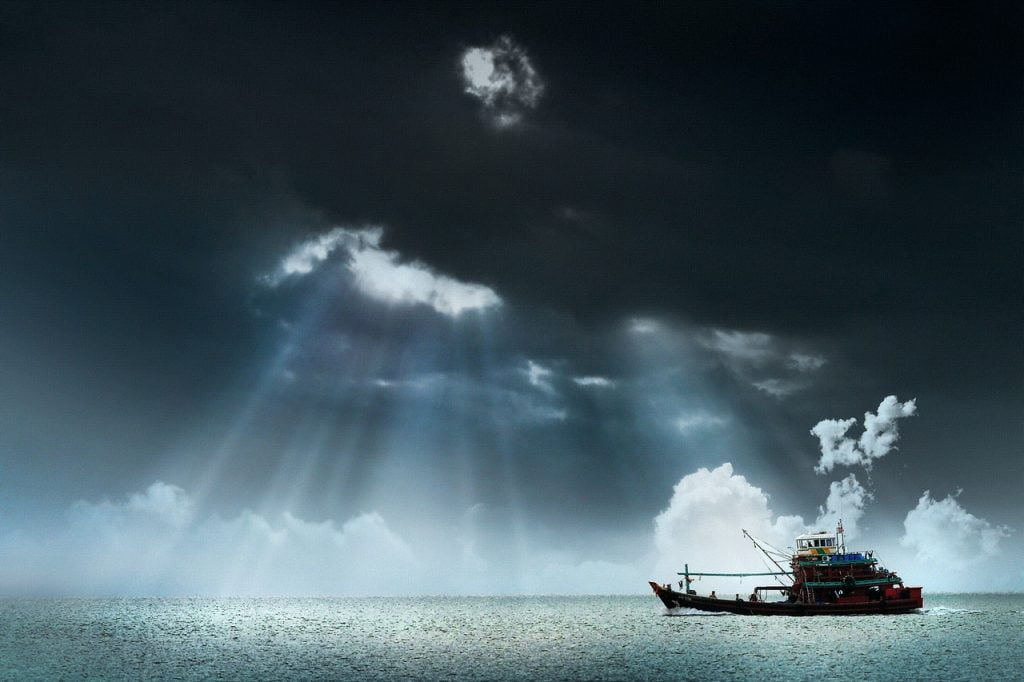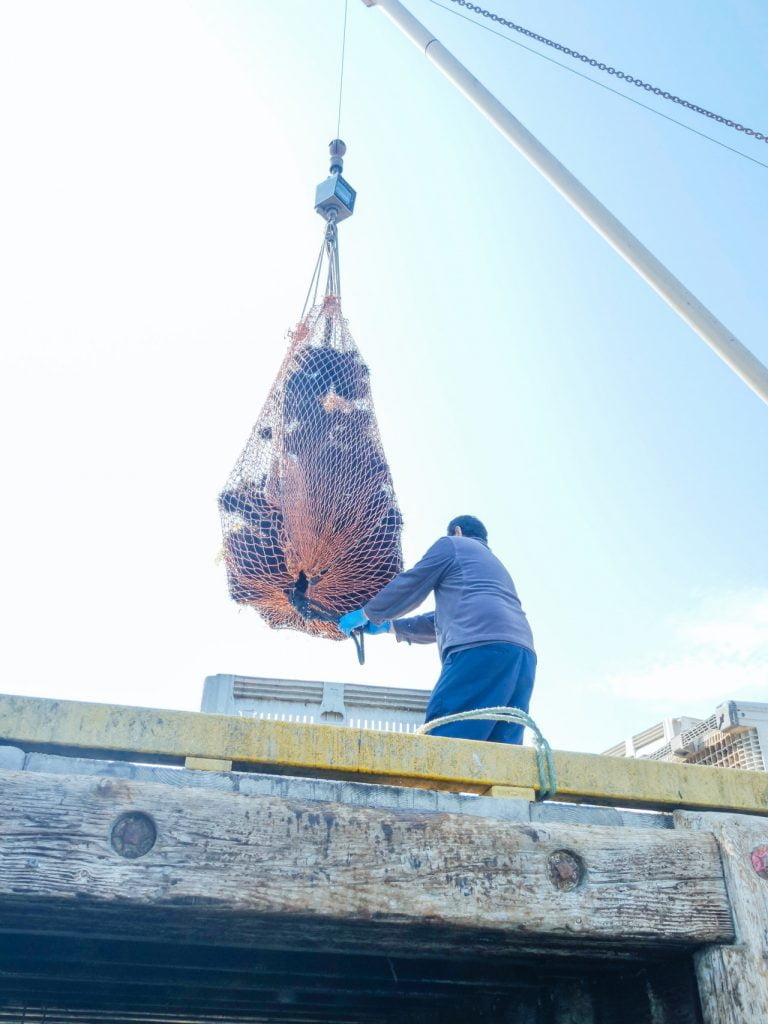Can Commercial Fishing be Sustainable? It’s a question that becomes ever more pertinent with each passing year. Coty Perry of Anglers, following on from a recent article on overfishing that he wrote, digs a little deeper into what prevents fishing from being sustainable today, and what hope if any there is for a peaceful future between marine ecosystems and government regulations.

The Commercial Fishing Industry and Sustainability: Can the Two Live in Perfect Harmony?
By Coty Perry
Commercial fishing is a multi-million dollar business that provides food to people all over the world. Commercial fishermen often work in large groups or fleets of boats. They typically target very large fish, such as tuna, cod, and swordfish.
Commercial fishing is a great source of income for many people along the coastlines of the world but commercial fishing comes with some negative consequences. Far too often commercial fishermen will “overfish”, which means they catch more fish than the environment can sustain. This has quite a few negative impacts including the harm it does on aquatic life but also the negative impact it has on the communities that live near those highly overfished areas.
In addition to overfishing, commercial ships also dump a lot of dead and dying organisms into our oceans. This not only kills those organisms but it pollutes the sea, harming other commercial fish and marine life including seals, whales, and dolphins.
No one commercial fisherman can actually cause any serious environmental damage but commercial fishing as a whole has done irreparable harm to our oceans. The commercial fishing industry isn’t going anywhere anytime soon, so it is in everyone’s best interest for commercial fishermen to do what they can to keep commercial fishing sustainable.
The Negative Impact of Government Subsidies on the Commercial Fishing Industry
Government subsidies are monetary benefits that commercial fishermen receive from their government. These commercial fishing subsidies have helped commercial fishers to overfish and dump in our waters for far too long despite the growing push towards commercial fishing sustainability.
In 2016, when the United Nations’ Food and Agriculture Organization released its report estimating overfishing levels in commercial fish, commercial fishermen worldwide had received over $35 billion in commercial fishing subsidies. This number has most likely increased since then.
Government subsidies for commercial fishermen come in a variety of different forms. The United Nations explains that commercial fishing subsidies include: “credit, insurance, and freight; equity infusions under state-owned corporations; money for building new boats; tax breaks on fuel, equipment or catch; under-pricing of fish that commercial fishers sell to the government, and money spent on research into better commercial fishing technologies.”
Every commercial fisherman has their own story as to why they need commercial fishing subsidies. Some claim that commercial fishing is an extremely competitive business and they can’t keep their fishing sustainable without the subsidies. Others know and understand the negative impact of the money they obtain but they do it anyway. I believe the latter to be the main driving force behind the subsidies.
There are also commercial anglers who receive commercial fishing subsidies through their government-owned corporation. These corporations argue that commercial fishing jobs are essential to their country’s economy.
However, commercial fishing is not the only way they make a living. Many commercial fishermen stand to lose their jobs due to commercial fishing subsidies because commercial fishing subsidies are often awarded arbitrarily and don’t actually go towards creating more sustainable commercial fishing practices.

How a Lack of Regulation has Led to Overfishing
In most countries overfishing is illegal. However, overfishing isn’t entirely illegal in the USA, which has led to overfishing across all of America’s commercial fisheries. In over 60% of American fisheries, overfishing occurs on a routine basis without any consequences for those commercial fishermen who overfish.
Commercial fishing regulation comes in different forms. The United Nations, which defines overfishing as “the removal of too much fish from the ocean,” has over 70 pages worth of regulations for overfishing worldwide.
The US government has spent over $8 billion over the past twelve years to help commercial fishermen overfish. This lack of regulation has caused overfishing to become a common practice in the United States’ commercial fishing industry.
We see things like this happen in recreational fishing as well. Farmed fish end up getting stocked in local ponds and lakes and many of these fish are bred using bad practices so they can barely survive an entire ice fishing season with people using fish finders, cameras, and advanced technology.
The Negative Effects of Overfishing
Many people are aware that overfishing is bad for the environment, but overfishing also causes over $80 billion yearly in lost revenue for many of the small and local fisheries that really rely on fishing as their primary source of commerce.
The overfishing of numerous commercial fisheries throughout the world has led to a loss in revenue, but overfishing also harms local communities that depend on the health of the environment for their livelihoods.
While overfishing is bad for any environment, overfishing in the United States is especially damaging because over 90% of America’s overfishing comes from subsidy-driven commercial fisheries.
Overfishing is also bad for local communities that depend on the health of the environment for their livelihoods. While overfishing is extremely harmful to any water life, overfished areas are most negatively affected because overfished areas are no longer able to support their species.
This overfishing reduces the number of jobs in overfished areas, which corresponds with a decrease in revenue for overfished communities.

Types of Hazardous Fishing Practices Impacting our Environment
When we think of overfishing we immediately think of commercial anglers trawling the waters for everything and anything they can find but overfishing really does come in a few different forms. Sustainability is important in all areas from sustainable clothing to fishing.
There are many different ways that commercial fishing harms the environment. Here are a few:
Ghost Fishing
Ghost fishing is a term for any abandoned fishing gear that continues to “fish”. Abandoned nets, for example, can be called “ghost nets”; these ghost nets continue to fish even after the commercial fisherman hauling them up decides not to. These ghost nets can continue ghost fishing for months, killing numerous fish and marine life, including seals, whales, and dolphins.
Fishing nets ghost fish because the commercial fisherman that ghost fishes will ignore the ghost-fishing nets. While ghost fishing is illegal in over 70% of countries, ghost fishing can continue for months without any consequences to the negligent commercial fishermen.
While ghost netting regulations exist in over 41 countries, ghost fishing regulations are generally nonexistent or not practiced.
Barotrauma
Fish can sense changes in water pressure, which is why ghost fishing nets continue ghost fishing because ghost nets continuously catch fish even during a drop in the ocean’s depth. To make matters worse for ghost-fished fish, ghost fishing nets capture ghost fish by changing water pressure around the prey to the point where the ghost fish are unable to breathe, leading to death.
Bycatch
Bycatch is the term for all fish caught by commercial fishermen that are not on their quota. Bycatch can be extremely dangerous to marine life because bycatch often involves the dumping of bycaught fish back into the seas after they have been caught. Bycatch can cause numerous issues beyond the negative impact on the environment. Some of these include time wasted on fish that you can’t keep and ultimately reduced revenue as a result of wasted time.
This threatens entire marine food webs and can cause extinction rates to rise. If bycaught fish are not killed by drowning or suffocation, they may still be eaten alive by predators such as sharks and sperm whales before they die.
Nonnative bycatch can have a negative effect on an ecosystem by introducing invasive species that prey on the bycaught fish.
Final Thoughts on Can Commercial Fishing be Sustainable?
At the end of the day, there is very little we can do to stop overfishing but it all starts with awareness and understanding. We need to see the negative impact, understand why it happens, and identify what drives it.
It’s clear that the government money is what drives overfishing and until we can separate the source of the funds from the very body in place to regulate the fishing, we aren’t likely to make any progress.